Seconded By: Britta Jaschinski,
The efforts to conserve over 54 varieties of corn in Peru and 65 in Mexico, a devotion that has endured for more than 7,500 years, now faces the threat of disappearing. The Indigenous Quechua, Wari, Nahua, Otomi and Wanka elders are tending the land with their unique traditions, protecting their ancestral corn seeds as if they were newborns.
Each species, size, color and shape is related to a story, and has a specific individual meaning and use. Corn is not only our staple food, but a precious object for pre Columbian rituals still present for offerings to the earth and, more importantly, for healing ceremonies. “We talk to her, we talk to the corn, as a daughter, as a mother…. So that she answers us. And she says: come back.”
Trough their techniques, they unveil innovative responses to climate change and drought, merging ancient indigenous practices with modern symbolism. Their tender gestures, songs and poems becomes a conduit for the language of nature, echoing the rituals of their ancestors who tended to the land. This series explores resilience, poetry, and the captivating imagery of their rituals—a tribute to their enduring spirit and forward-thinking vision.
When documenting their connexion to seeds, I found worlds alive with rituals and devotions to seeds, where corn wasn’t just a plant—it was the beating heart of life and the soul of indigenous identity. The origin of rituals to call for rain, to celebrate the rebirth of the native varieties and to heal the Earth from its drought.
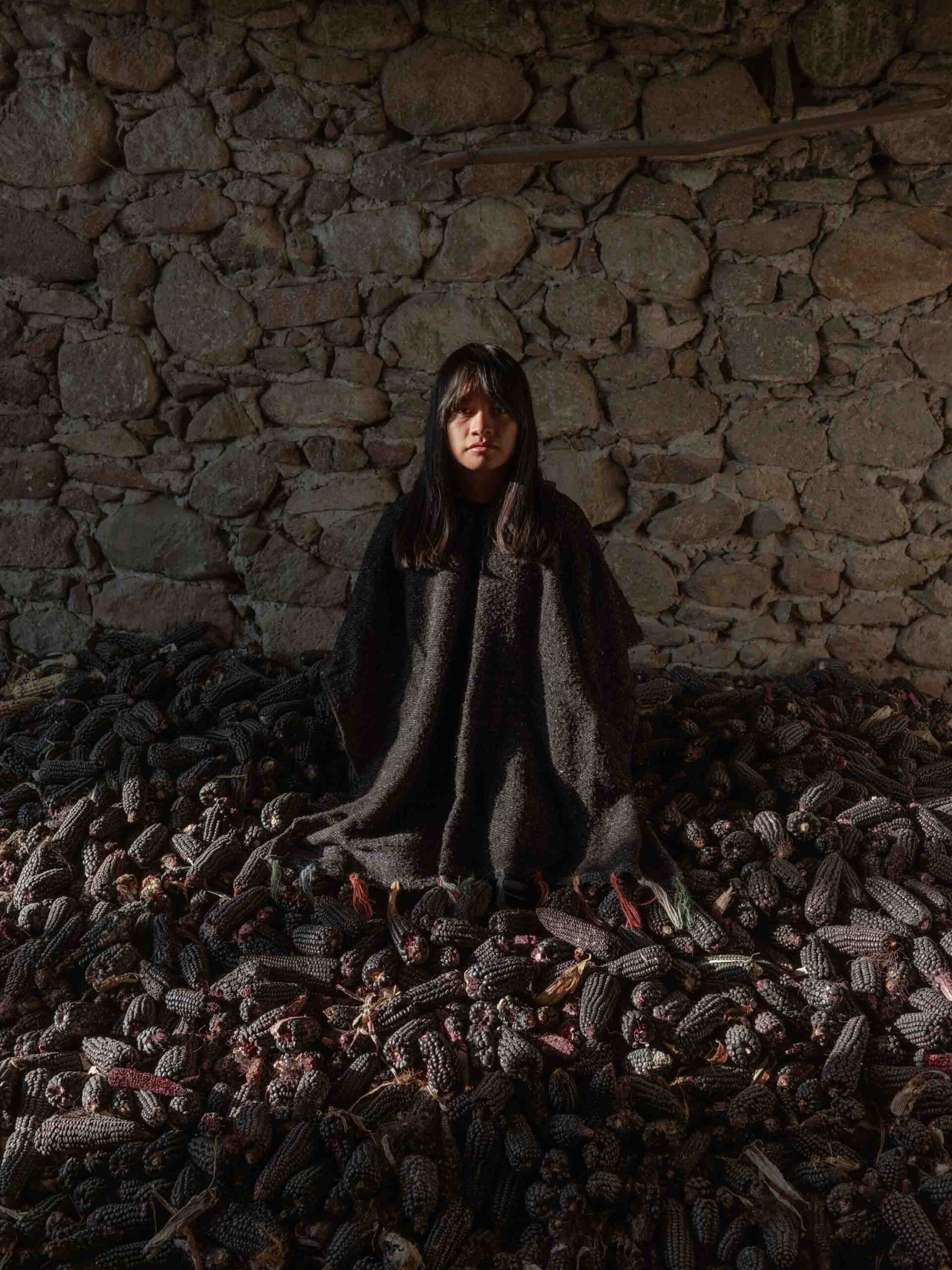
Calling Our Spirits Back To The Land - 01
Portrait of Janeth Vargas, an indigenous Otomi woman sitting on her recent harvest of black corn. In Ixtenco, the growth of corn is related to rituals to the deities of water and rain, which are also related to the Malinche volcano represented by a woman. Its name comes from the Otomi language meaning a woman with long, folded skirts.
I proposed to Janeth to make a portrait of her sitting on her corn harvest to allude to the volcano La Malinche and thus evoke the female dimension of corn, to which she agreed.

Calling Our Spirits Back To The Land - 02
Ulises Hernandez’s hand with the Teocintle (Zea perennis), the smallest corn cob in existence. The Teocintle is considered to be the first wild corn that was later domesticated into what we know today as maize. The word teocintle comes from the Nahuatl word teocentli or teoxintli, which means “God’s corn”. Ulises grows teocintle on his farm although it cannot be consumed or sold but he does it for conservation.

Calling Our Spirits Back To The Land - 03
Magdalena Gamboa, Vilma Espinal and Gloria Espinal, Wanka indigenous woman and singers performing the Jarawi songs as a ritual during corn planting. The Jarawi is an ancient chant, from the pre-Columbian period, performed only in the central Andes of Peru. Verses, poems, dedicated to the sowing and harvesting of corn and to call for the rain. According to Wanka and Quechua cosmology, by calling to the rain with the Jarawi, the seed will grow strong.
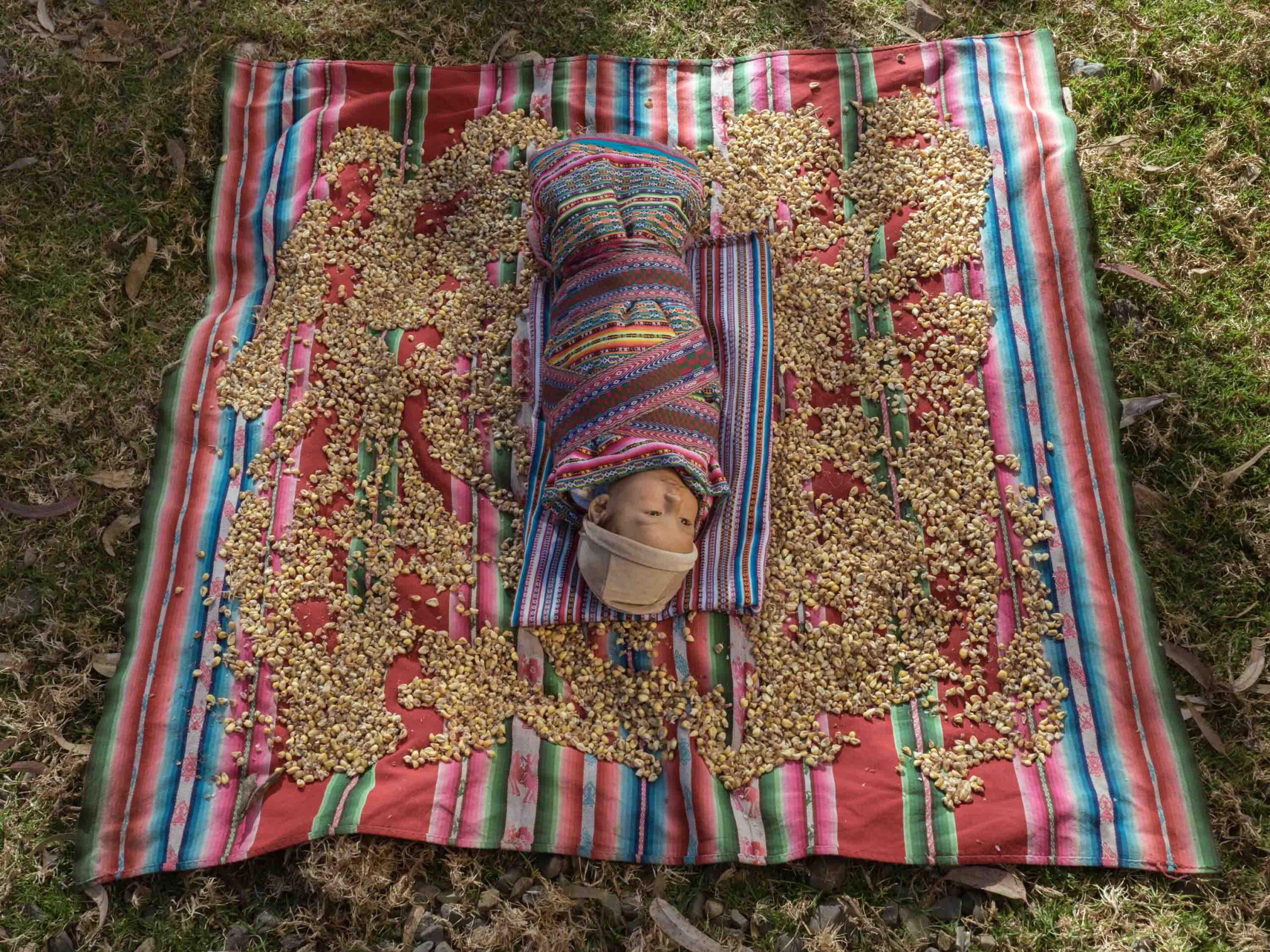
Calling Our Spirits Back To The Land - 04
Valentin, a one-year-old baby from the community of Llupa, laying among germinated corn seeds that will be later be used to prepare the corn drink called chicha. These corn seeds, drying under the sun, are treated as newborns and, like Valentin, were resting on the same hand-woven Quechua cloth we call Lliclla.
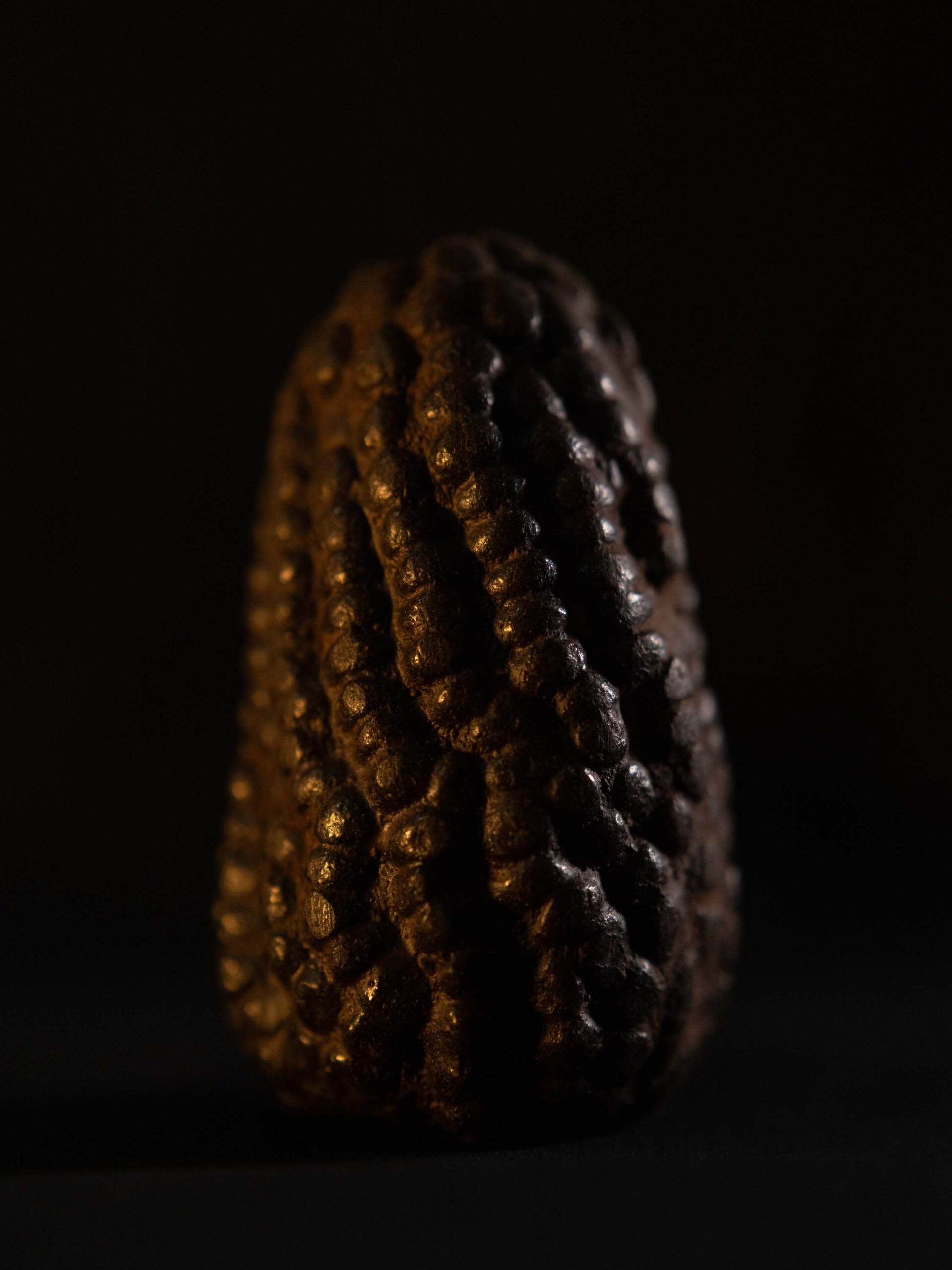
Calling Our Spirits Back To The Land - 05
A corn phytolith found in the southern region of Cusco, in what is presumed to have been a pre-Columbian ritual burial for land fertility. According to the Peruvian biologist Duriel Perez Campana, who has a similar piece also fossilized, this stone corn would be 8000 B.C., age determined by the carbon 13 and 14 testing of the University of Illinois, USA.
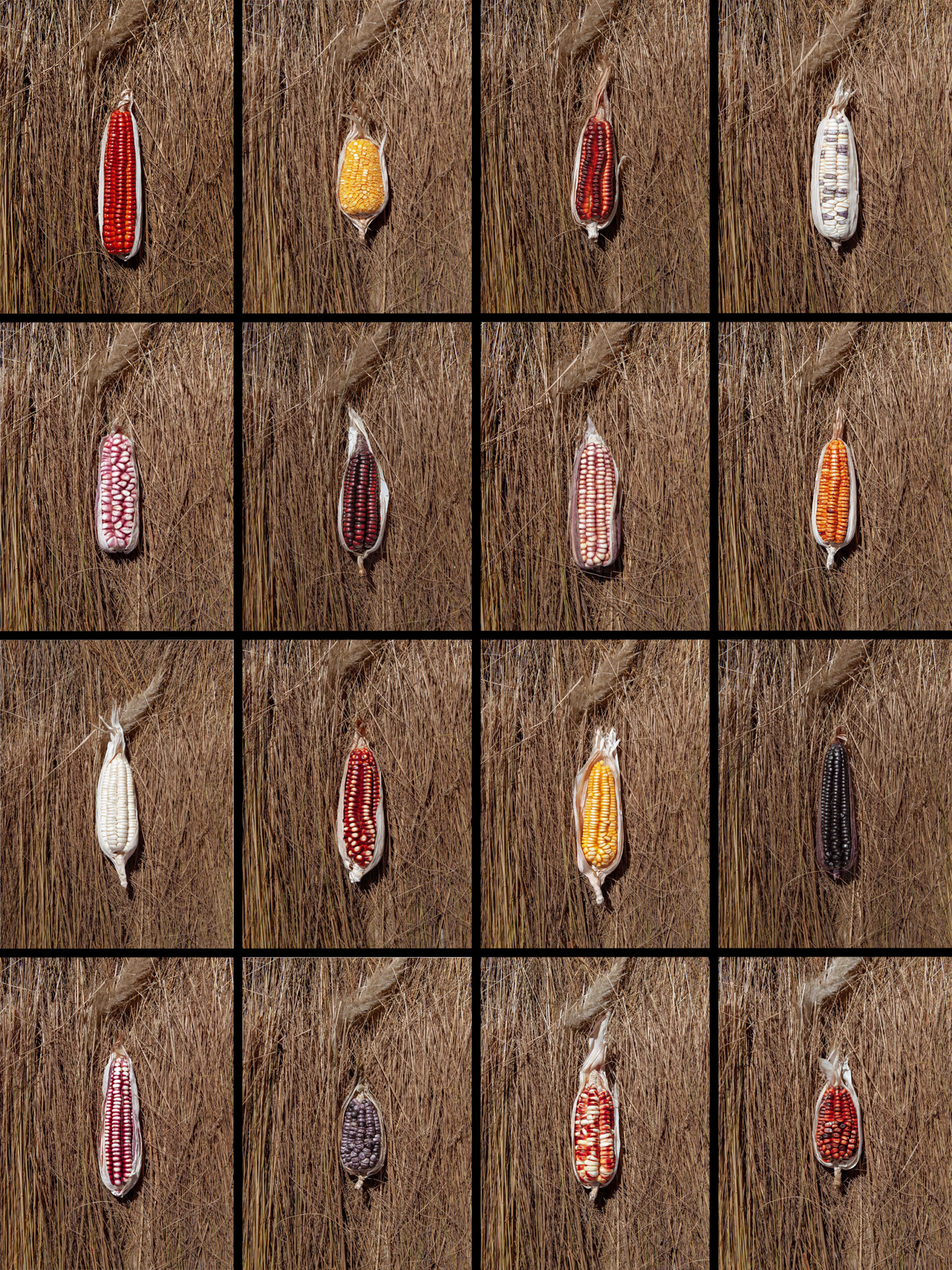
Calling Our Spirits Back To The Land - 06
A selection of sixteen different varieties of native corn growing in the valley of the town of Pisac, Cusco. According to Peruvian biologist Dr Alexander Grobman Tversqui, in Peru there is more than 54 varieties of corn preserved over more than 6,700 years.
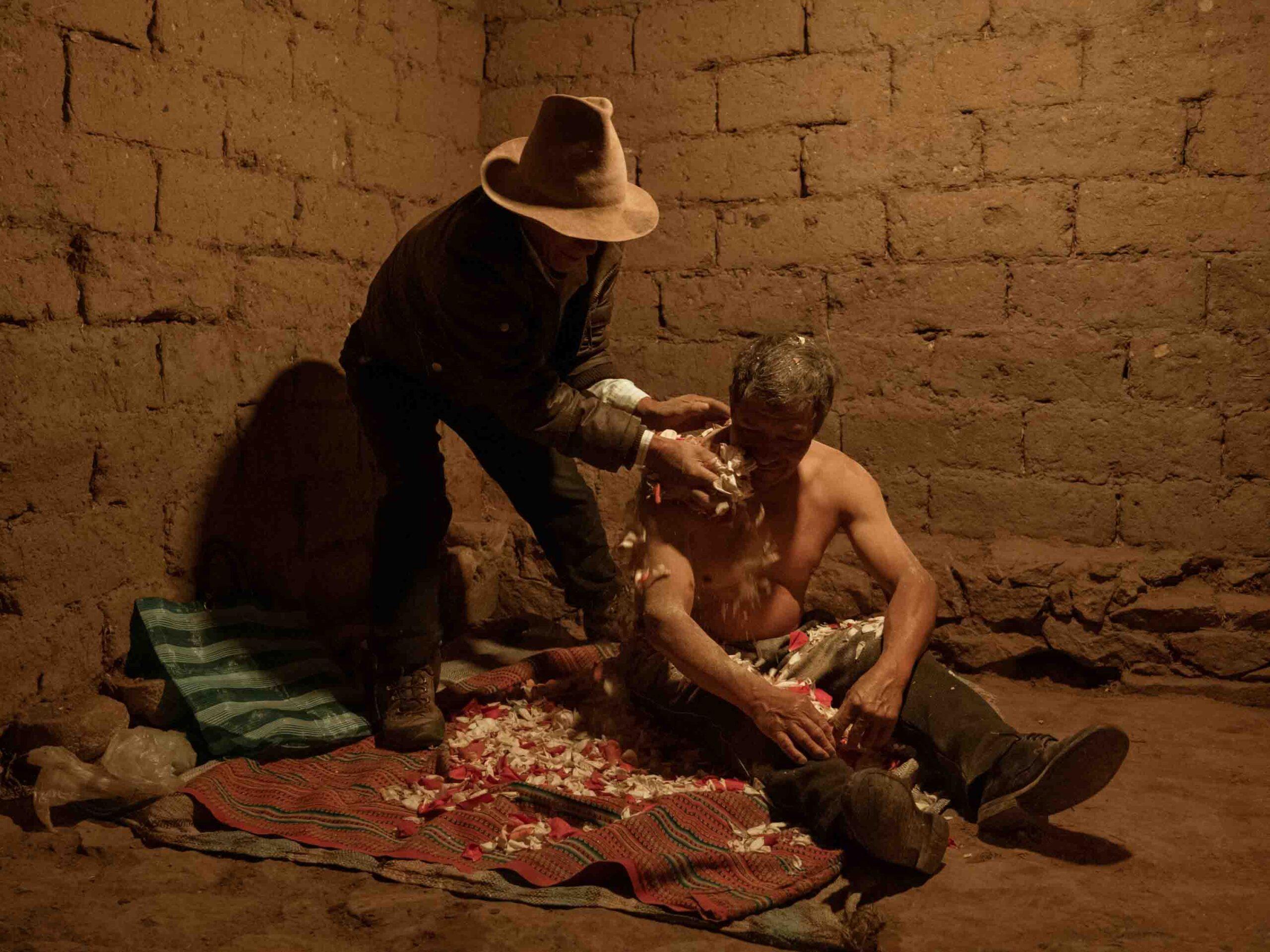
Calling Our Spirits Back To The Land - 07
Victor Vargas, a Wari medicine man, performs a healing ritual called Shokma using maize flour and rose petals to rub on his patient Daniel. Victor helps him overcome his physical weakness and depression so that Daniel can return to work his fields. According to Wari cosmology, sudden weather changes and damaged agricultural cycles can make people physically and mentally ill.
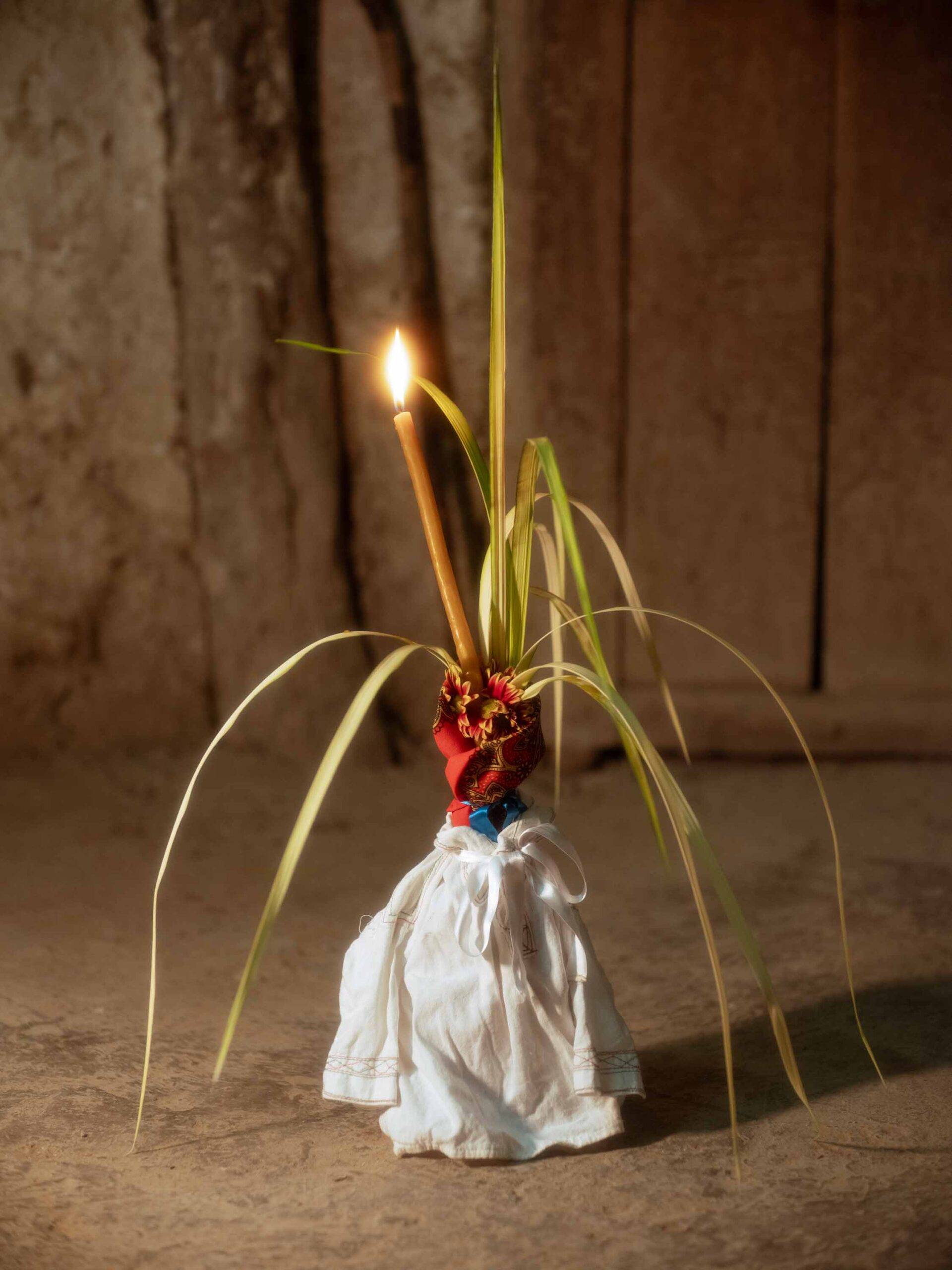
Calling Our Spirits Back To The Land - 08
Portrait of a corn dressed as a child during an indigenous Nahua ritual called Elotlamanistli a ritual offering that is made to the tender corn in the Huasteca region, Veracruz. According to local Nahua priest Lorenzo Martin de la Cruz, the corn cobs are the children of the Earth, their clothing represents their personality and the light of the candle their spirit.
I made this portrait of only one of the four corn children of the Elotlamanistli ritual because I wanted to draw attention to the motives and intentions that the Nahua put into dressing the cobs.

Calling Our Spirits Back To The Land - 09
A group of Quechua farmers in the Andean region celebrate the corn planting day with a duel ritual between men and women called “Since” which consists of throwing corn flour over each other’s heads. According to Quechua cosmology, the more maize flour is distributed among all the farmers, the better the harvest will be.
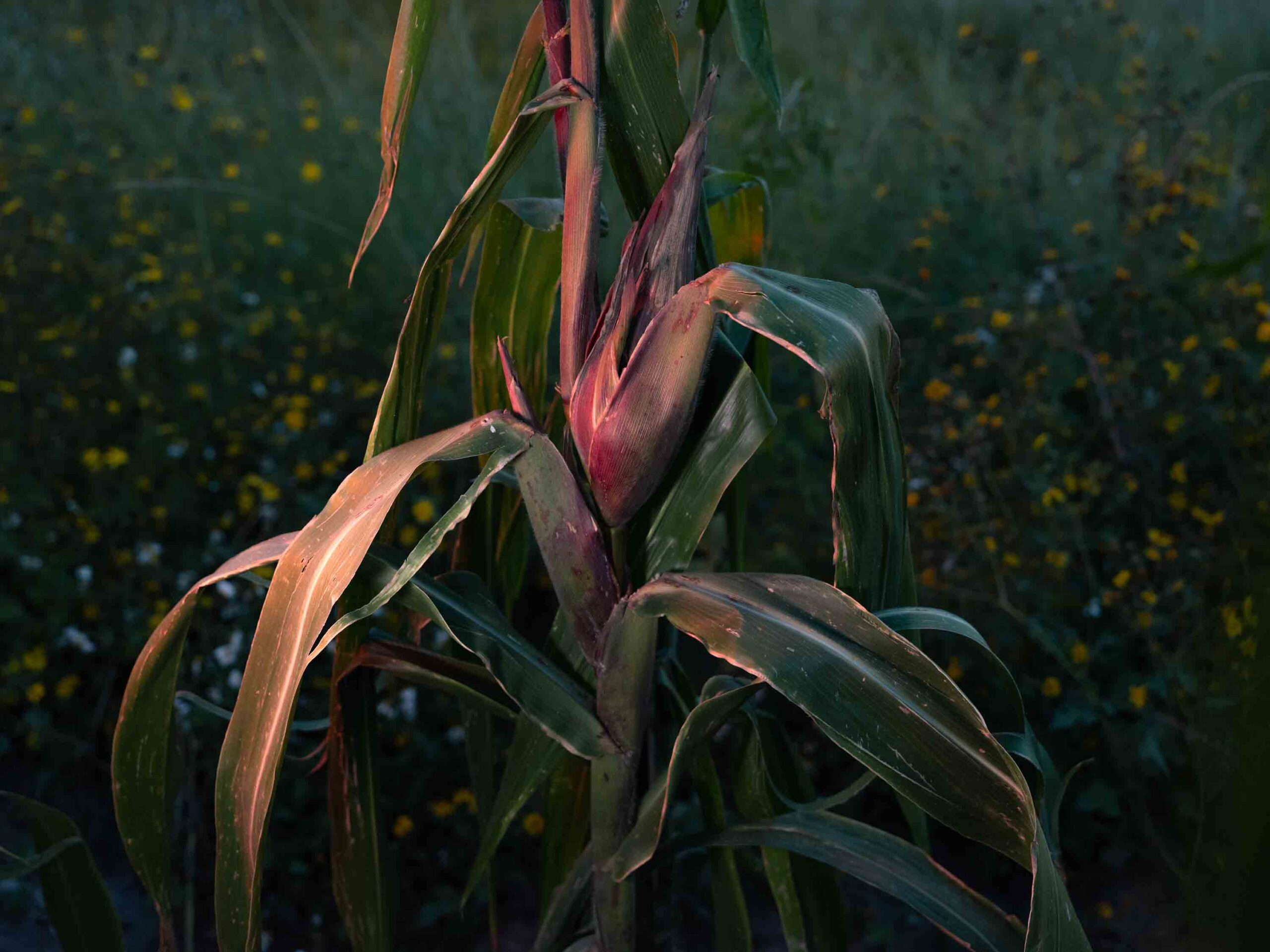
Calling Our Spirits Back To The Land - 10
Detail of the corn plant in the maturing stage at sunset. A corn plant does not grow on its own and is not wild, but has gone through a process of domestication and its growth and development depends entirely on farmers. Likewise, the survival of the more than 50 varieties in Peru and 60 in Mexico depends on the care and strategic planting of the different seeds so that the plant can pollinate properly.

